Brewing flavor characteristics of Paradise Bird Coffee, known as the Little Blue Mountains in Papua New Guinea Coffee producing area
Professional coffee knowledge exchange more coffee bean information please follow the coffee workshop (Wechat official account cafe_style)
Papua New Guinea is an island in the southwestern Pacific Ocean. The first variety of iron pickup in Papua New Guinea was introduced from the Blue Mountains of Jamaica, and it also has the same island-type planting environment, so it is called "Little Blue Mountain" coffee. "does Little Blue Mountain Coffee really have a sweet and sour balance and mellow coffee flavor in the Jamaican Blue Mountains? Qianjie acquired a coffee bean from Papua New Guinea with curiosity, and conducted a comprehensive study on the roasting, cup testing and brewing of the coffee bean.

Geography of coffee cultivation
New Guinea is an island country in the southwestern Pacific Ocean, bordered by Indonesia to the west, Solomon Islands to the east, Indonesia in the west and Papua New Guinea in the east. The local island climate is characterized by high temperature and high humidity all the year round. The annual average temperature in the flat land is about 24 ℃, and the temperature decreases rapidly with the increase of height, and there is heavy rain in winter. There are tropical rain forest volcanic rocks and plateau topography, between 1200 and 2500 meters above sea level, is a paradise for growing coffee.
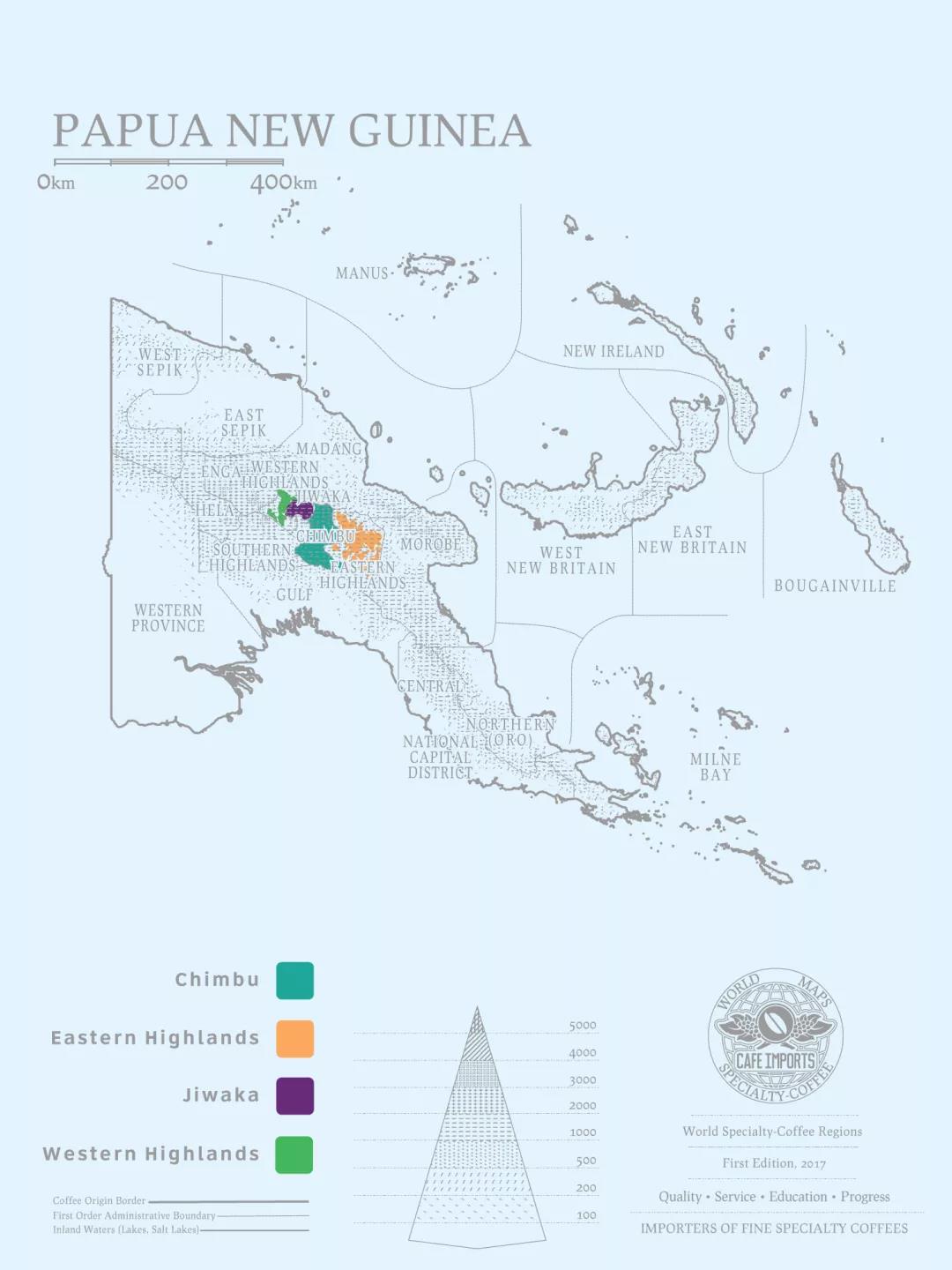
Papua New Guinea, which is mainly in the highlands, grows a variety of coffee varieties. Coffee is grown in the highlands above 1300 meters, using organic and shade farming methods. The advantage of planting is that the coffee beans produced here have a mellow taste and are full of nutty and fruit flavors. Qianjie believes that the flavor of Papua New Guinea coffee is different from that of Indonesian coffee beans in Asia, herbs and low flavor, but bright, sweet and sour, flower and fruit aroma, similar to the flavor of South America.
Coffee planting pattern
In Papua New Guinea, about 75 per cent of coffee products come from small local farms. Many farms reclaim land in the forest, and some are in the depths of the forest, almost isolated from the rest of the world. The country's coffee is of high quality because it is grown in the highlands of 1300 mi 1800 meters above sea level. Although coffee is also grown in some lowlands, the yield is relatively small. Most of the locally grown caffeine is grown under natural conditions because of the problems and high costs of transporting chemical fertilizers and pesticides to the farm.
History of coffee cultivation
In 1892 Dutch sailors began to introduce coffee and began to breed in the Rigo district of Papua New Guinea.
In 1908, Papua New Guinea had 180 acres of land to grow coffee.
In 1931, Ironhide Card was introduced from Jamaica to Papua New Guinea. At that time, Britain had occupied Jamaica for nearly 300 years, and the most typical coffee in Jamaica was the Blue Mountain Coffee of Iron Card. Because of the friendly relationship between Australia and Britain, it was reasonable for Papua New Guinea to introduce tin card. Qianjie Coffee will take the name of Little Blue Mountain to introduce Papua New Guinea Coffee to guests. After all, the historical reasons are there, well-founded, and the name of Little Blue Mountain is much easier to remember than Papua New Guinea.
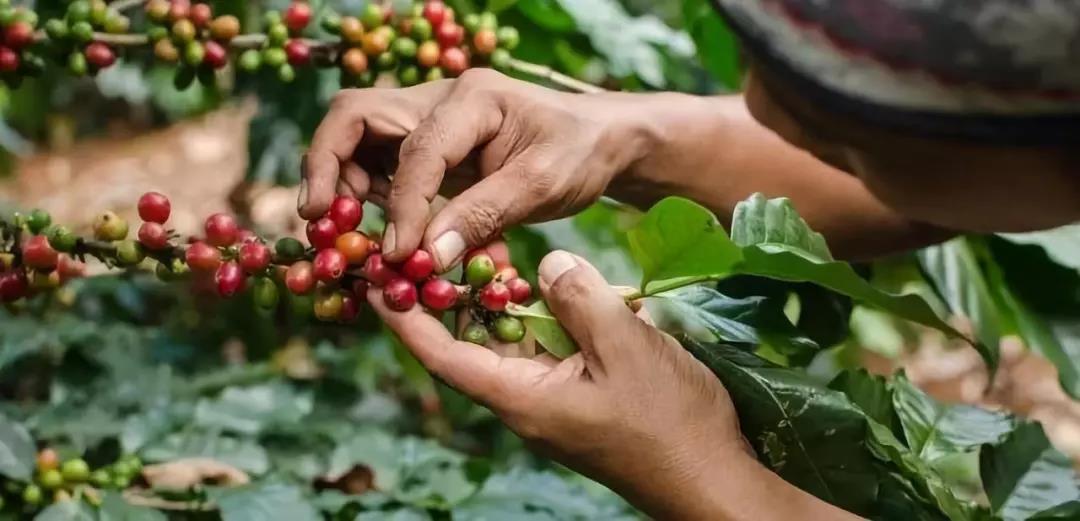
Bourbon coffee beans were introduced from Kenya in 1950. Coincidentally, Kenya was also a British colony at that time. The open cultivation encouraged by the government led to the substantial growth of the coffee industry in the 1970s and 1980s.
In 1961, after the end of World War II, the western part of the Dutch island of New Guinea declared independence under the name "West Papua", but only a few months later it was invaded by the same independent Indonesia, where Indonesia established the province of Irian Jaya. After 2003, it is planned for Papua and West Papua provinces.
Since moving to New World and Kaddura from Brazil in 1962, the quality of coffee beans in Papua New Guinea has made a great leap forward.
The frost in 1975 destroyed most coffee crops in Brazil but stimulated the development of coffee in Papua New Guinea. The government has implemented a scheme to finance the creation of about 20 hectares of coffee plantations in rural areas. This measure has indeed increased the penetration of coffee in the local economy, with annual production reaching 1 million bags by 1990.
Coffee growing area
Boutique coffee beans in Papua New Guinea are mainly grown in Wahigi Valley and Sigri in the western highlands, Arona, Kimel and Arokare in the eastern highlands, and Goroka in the eastern highlands. Because the variety of coffee is different from that of Indonesia, the altitude is also higher than that of Sumatra, and the coffee beans produced in that country are treated with water, Qianjie believes that the regional flavor of coffee in Papua New Guinea is very different from that of Indonesian coffee beans, herbs and low flavors, but bright, sweet and sour, flower and fruit aromas, which are close to the flavor of South America.
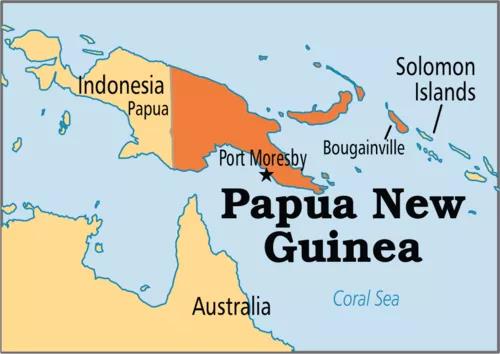
Famous manor in Papua New Guinea
The Siguri estate in the western highlands has introduced many people to the coffee beans of Papua New Guinea. The people of Papua New Guinea regard the beautiful bird of paradise as a bird of freedom and joy, a "gift of the gods". Siguri Paradise Bird Manor Iron pickup Coffee beans, like the migration of birds, have traveled long distances from the Jamaican Blue Mountains to Papua New Guinea to breed, with the same pedigree of the Jamaican Blue Mountains.
Sigri Paradise Bird Manor (Sigir)
The Wahgi Valley, located in the western plateau province of PNG, has been around for more than 60 years. Founded in 1950, the estate was the pioneer of the local coffee industry. The boutique coffee is famous in Germany, New Zealand, Australia, Japan and North America. The average elevation of the manor is 1600 meters, which is introduced from the cool climate of Arusha in Tanzania. Rain Water provides good growth conditions for coffee trees, and the quality of beans in Bird of Paradise Manor is extremely stable every season.
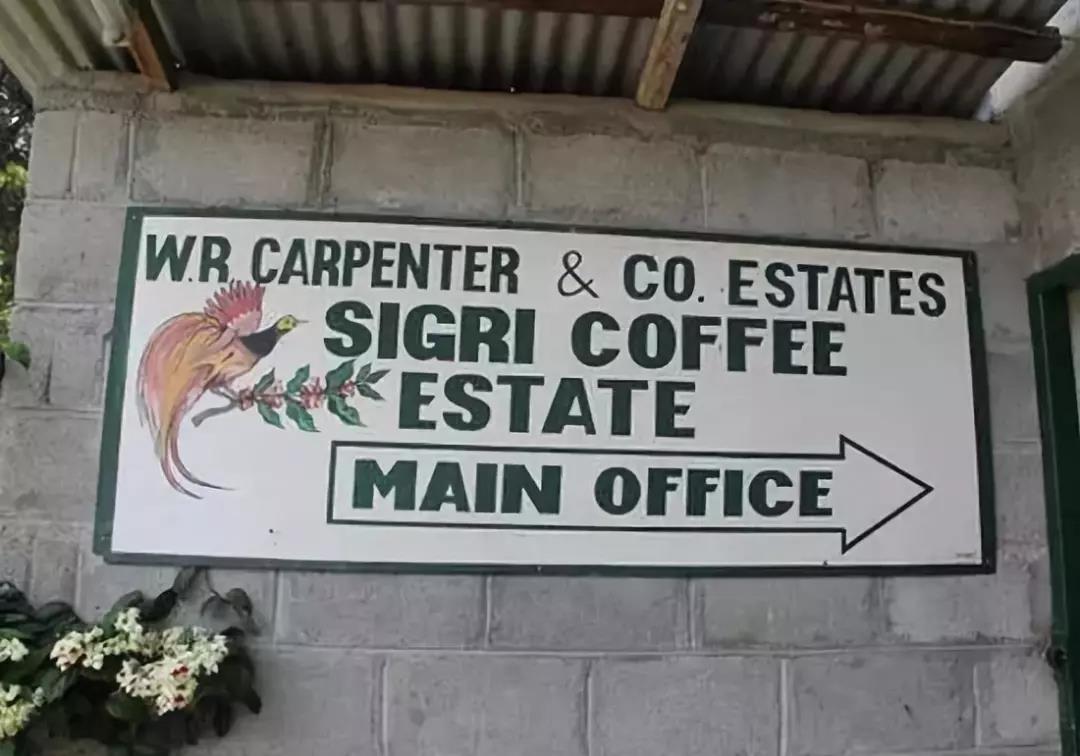
The manor was founded in 1950 and has been a pioneer in the local coffee industry for more than 60 years. The Bird of Paradise Manor is located in the Waghi Valley Valley in the Western Highlands Province (Western Highlands), about 1500 meters above sea level, with mineral-rich volcanic soil, cool climate, fertile soil and abundant rainfall. Bird Paradise Manor also pays great attention to ecological protection, in order to protect soil and water, reject the use of pesticides and pesticides, and take care of the ecology and nearby birds. Bird Paradise Manor has adhered to a high standard of planting and handling system for many years. During the harvest season from April to September each year, only fully ripe red coffee fruits can be picked by hand, making the coffee berries sour and sweet. At Paradise Bird Manor, cup tests are carried out every day to ensure that the plantation provides customers with the same quality gourmet coffee. As a result, Paradise Bird Manor has become a classic of boutique coffee in the world. As mentioned earlier, Qianjie Coffee chooses this Paradise Bird Manor coffee beans to take a fancy to the manor's strict production chain, so as to ensure the quality of coffee beans.
Chimere Manor (Kimel Estate)
Founded by an Australian in 1974, it is located in the western highlands near the Goroka Mt Hagen WahgiValley mountain valley. the land is owned by the local aboriginal Opais tribe, a cooperative manor with an area of 620 hectares, employs 432 people, and sets up schools and medical centers to take care of employees and their families nearby. due to the fertile volcanic soil and cold alpine microclimate, the virgin forest is lush. The use of Albizias and Grevilleas shade tree planting, good management and environment-friendly, maintain the natural ecosystem of planting methods, the use of organic fertilization and recycled water treatment of sewage reuse irrigation. Due to quality control and effective management, Kimel Estate Chimere Manor Coffee has become one of the best-known coffees in Papua New Guinea.
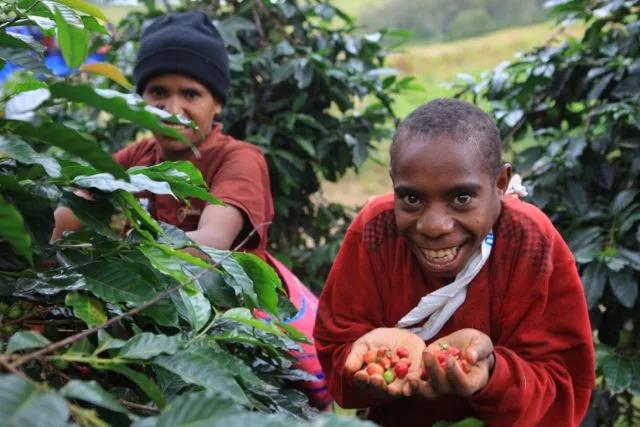
Located in the Wiki Valley of the western plateau of Papua New Guinea near the kimel Valley, like many large farms / estates have their own washing plants, but in fact this is an estate owned by many independent small coffee farmers of the surrounding Opais people and, in a sense, a private cooperative. Due to the excellent growth conditions and the stable quality control process of the treatment plant, the coffee produced has an active sense of brightness and retains a considerable degree of flavor uniqueness of Papua New Guinea coffee. Another special feature is the diversity of coffee varieties planted by Kimmel. On the flavor, a little spicy aromas, nuts, sugar cane, sweet and refreshing, creamy and smooth.
Coffee cultivars
Iron pickups are mainly grown in Papua New Guinea. Iron pickup has an elegant flavor, but its physique is weak, its disease resistance is low, and it is easy to be infected with leaf rust. Qianjie Coffee believes that the top leaf of the iron pickup coffee tree is bronzed, and some people call it "red top coffee". The beans of the iron pickup are larger, cone-shaped or thin-shaped, which is different from the round beans of bourbon coffee beans. Iron pickup coffee has its unique quiet and clean flavor, as well as balanced features, high cleanliness.
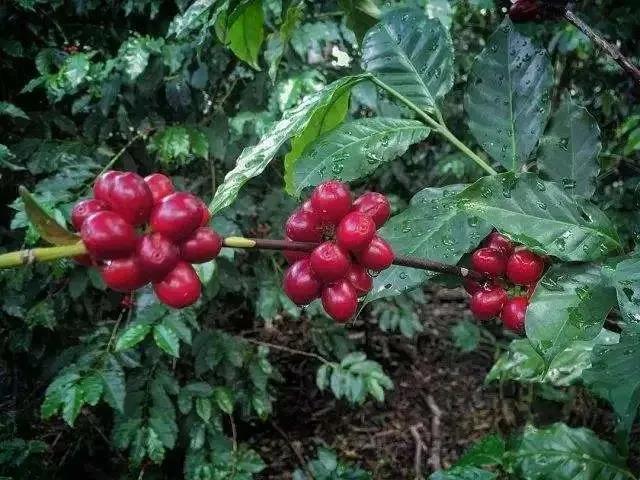
Coffee bean treatment
Papua New Guinea coffee is mainly washed, and its flavor is brighter and more sour, similar to that of Central American coffee. Large estates and farms (plantation) usually have their own washing plants, and smaller individual coffee farmers are more able to control the quality and flavor of their output.
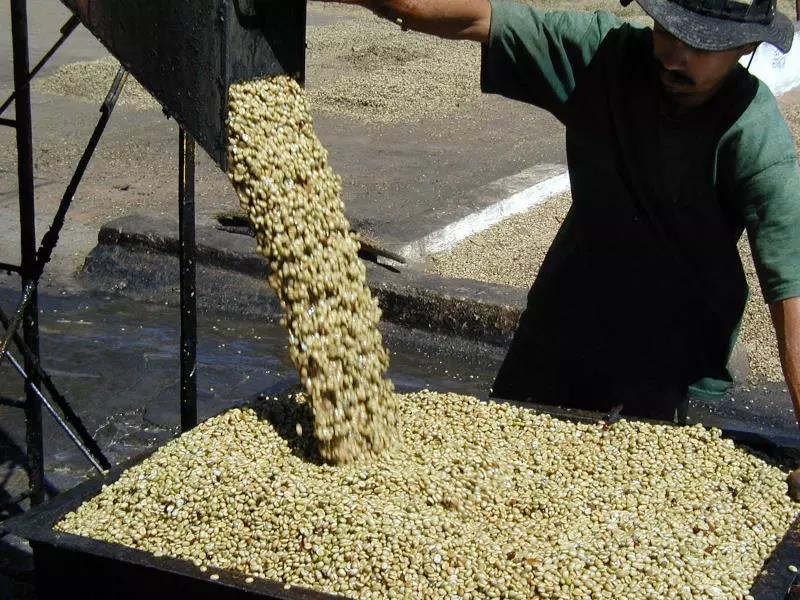
The ripe red coffee berries are harvested and sent to the manor's own washing plant for treatment. The local washing treatment in Papua New Guinea is different from that in Central and South America. Wash and ferment three times, soak each time for about 24 hours, and change the clean water to control the flavor of the coffee; after cleaning, remove the shell of the raw beans and carry out various grades, such as AA, AB, PB beans, etc., this fine post-processing method brings bright and delicate sour flavor to the coffee itself, clean and long sweet taste.
Coffee bean grading system
Coffee grades in Papua New Guinea: a total of 12 grades, graded items include:
1, number of eyes (Bean size)
2, number of defects per kilogram (Total defect Equivalent per kg)
3, bean type (Bean shape)
4, raw bean color (Raw bean Colour)
5, raw bean aroma (Odour)
6, baking condition (Roasting Aspects)
7, cup test quality (cup quality)
Classification by defect: grade Grade, bean size Screen Size, with a total of 12 grades (for Arabica only)
AA > 18 items
A 17 mesh
AB > 16 items (50%)
B > 16 items
C > 15 mesh
PB 11-14 mesh
X mixed
E > 19 items
PSC > 15mm
Y1 mixed
Y2 mixed
T mixed
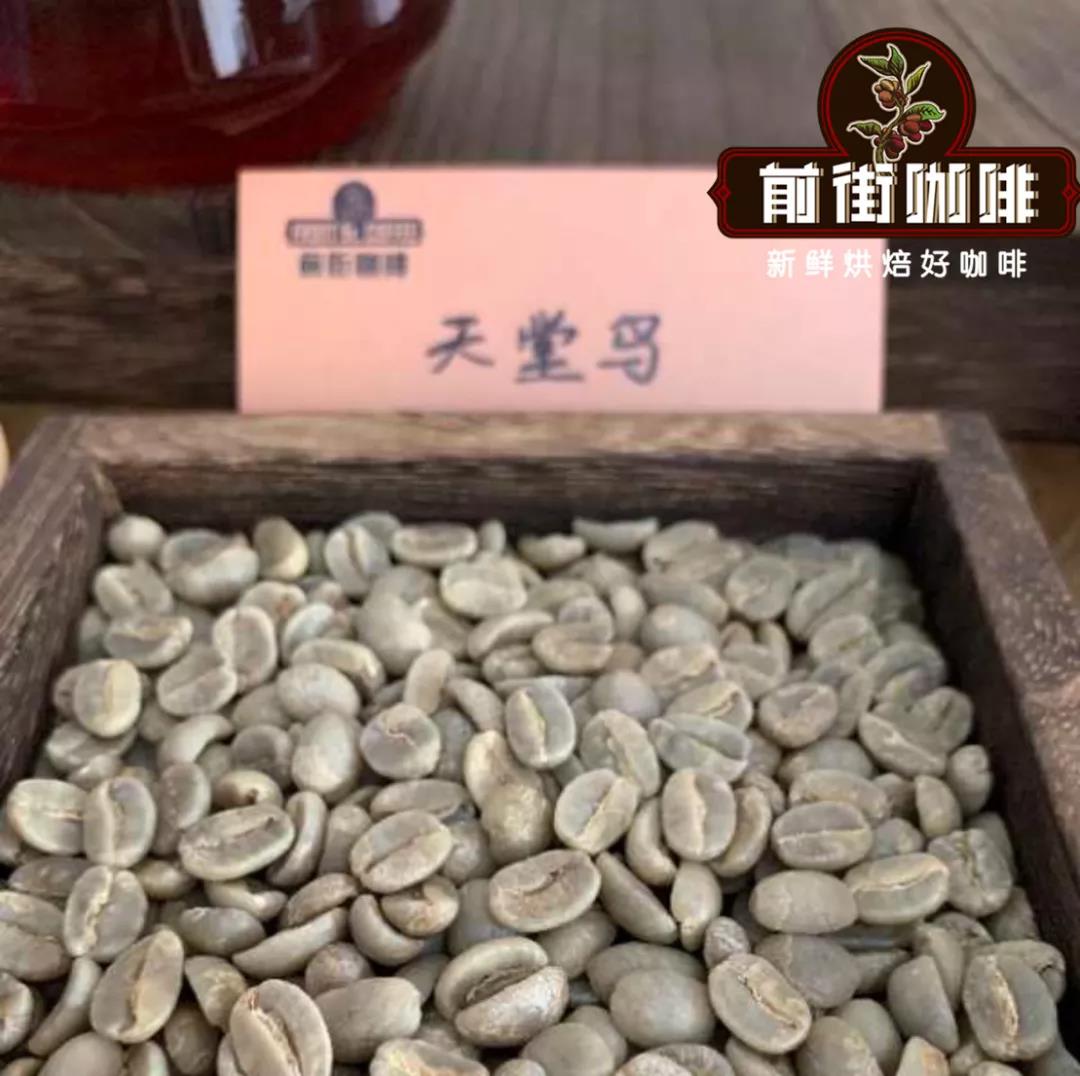
Take the most eye-catching boutique AA and An as an example:
The main results are as follows: (1) AA and Grade A coffee belong to the grade of boutique coffee, mainly from larger estates.
In the case of AA, the size of the bean is larger than 18 mesh, and the shape of the bean is oval. Number of shortcomings: a maximum of 10 defects per kilogram. The appearance of raw beans is green and slightly blue. The taste of raw beans should be clean and the taste of baking should be clean and smooth. The taste of the cup should be excellent (Fine Cup).
(2) the size of Grade An is larger than that of 17 mesh, and the cup test should be at least GTF (Good to Fine), that is, good to excellent taste. The number of other defects and the condition of raw beans are the same as AA.
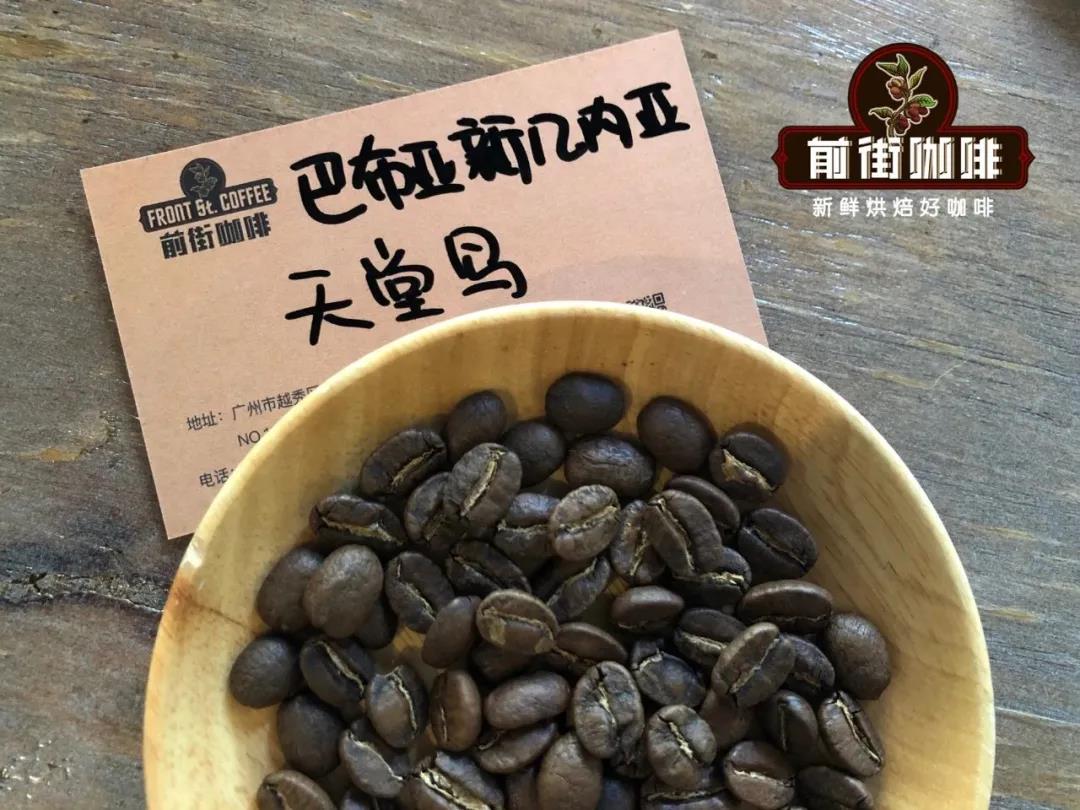
Country of origin: Papua New Guinea
Manor: Sigley Paradise Bird Manor
Altitude: 1600-1800m
Treatment: washing treatment
Variety: iron pickup
Grade: AA
Suggestion on roasting coffee beans in front of the street
Qianjie coffee is recommended to use medium roasting, because the tin card is a low-density raw bean, in order to highlight its refreshing acidity and fruit aroma, will focus on the firepower adjustment after the first burst. The furnace temperature reaches 170 degrees Celsius and enters the pot, the throttle opens 3, the firepower is 140 degrees, and the temperature recovery point is 1 temperature. The throttle opens to 4; when the temperature is 140 degrees Celsius, the throttle opens to 4; when baking to 6 degrees Celsius, the bean surface turns yellow, the smell of grass disappears completely, the dehydration is completed, and the temperature 176 degrees firepower drops to 110; the throttle changes 4.
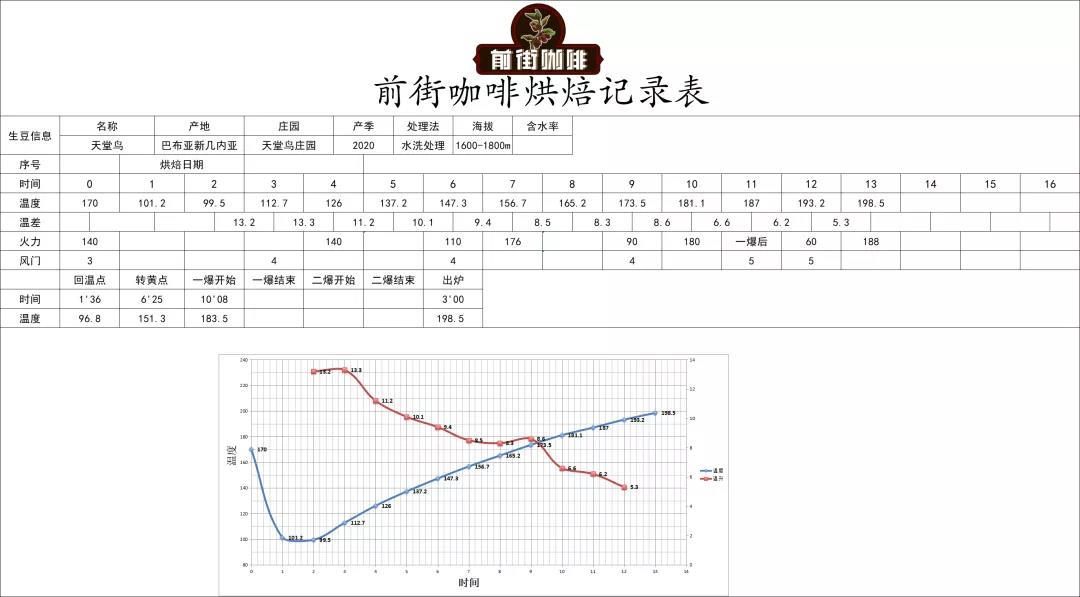
When the firepower dropped to 90 at 180 degrees, ugly wrinkles and black markings appeared on the bean surface, and the smell of toast obviously changed to coffee, which could be defined as a prelude to an explosion. At this time, the firepower rose to 183.5 degrees to 10 degrees 39. 08 "starts to explode, the throttle is fully open, adjust the firepower to 60 degrees at 188 degrees, and the throttle is fully open (the firepower should be adjusted very carefully, it should not be so small that there is no burst sound, and the temperature rise rate after the explosion is controlled between 6 degrees). The development time of the first explosion is 3 degrees 39 degrees, and the pot is 198.5 degrees.
Coffee cup test report on Qianjie
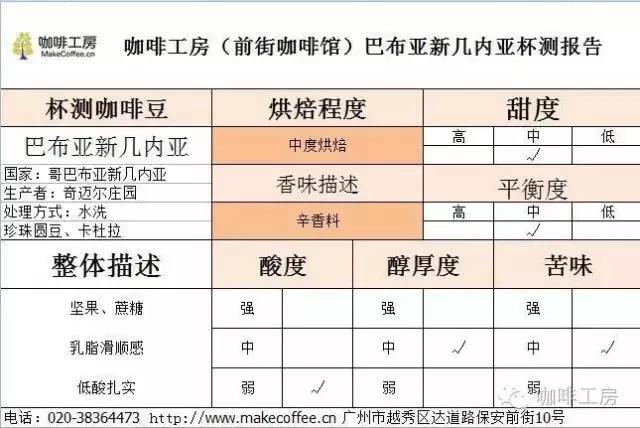
The front street compares the paradise bird coffee beans with the Jamaican Blue Mountains through a cup test. The paradise bird coffee beans have a faint spice flavor than the Jamaican Blue Mountain coffee, and its sweet and sour balance is a bit close to that of the Jamaican Blue Mountains. but not as mellow as the Jamaican Blue Mountain.
The suggestion of cooking in Qianjie
Filter cup: Kono coffee
Powder content: 15g powder / water ratio: 1:15
Degree of grinding: BG6w (75% pass rate of No. 20 screen)
Water temperature: 89 degrees
* with regard to the degree of grinding, Qianjie is determined by screening this method. According to the grinding advice provided by the American Fine Coffee Association SCA for hand-brewed coffee, Qianjie combined with the actual operation verification, using different degrees of grinding to brew, there is a significant gap in the finished products, and the degree of grinding of each type of coffee beans will be different, this is the significance of sifting. If you don't have a sieve at home, Qianjie Coffee suggests observing the speed of the water to judge that if the flow is too fast, it is coarse, and if the flow is too slow, it is fine.
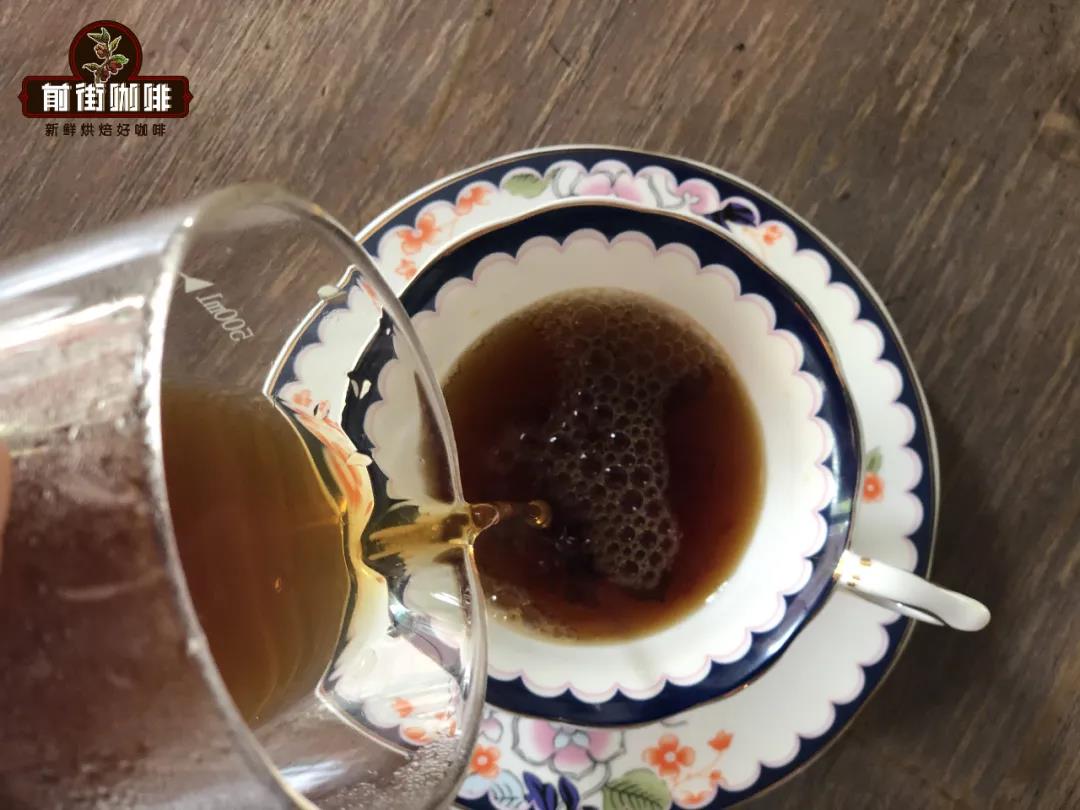
Qianjie coffee is extracted by stages, also known as three-stage brewing: steaming with 30 grams of water for 30 seconds, injecting water around a circle to 125 grams for stages, continuing to inject water to 225 grams when the water level is about to be exposed to the powder bed, removing the filter cup when the water level is about to be exposed to the powder bed, (steaming starting timing) the extraction time is 2 grams 3900 ".
Brewing flavor: the sweetness of toast, the sweetness of nuts and the acidity and sweetness of some micro-fruit acids form a good layered sensation, the aftertaste of the spices is very sweet and special, the taste is rich and balanced, with sweet taste and bright acidity, with fruit-like aromas.
For more boutique coffee beans, please add private Qianjie coffee on Wechat. WeChat account: kaixinguoguo0925
Important Notice :
前街咖啡 FrontStreet Coffee has moved to new addredd:
FrontStreet Coffee Address: 315,Donghua East Road,GuangZhou
Tel:020 38364473
- Prev
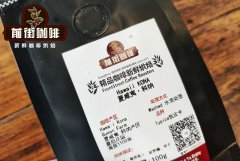
Will the weather affect the flavor of the coffee during processing? What is the process of coffee processing?
As discussions about climate change become mainstream in the media in 2019, it is well known that global warming is no longer a distant future. Rising sea levels and rising temperatures have affected many aspects of human life. Agriculture is one of the most changing areas, and agriculture itself is also an important factor in greenhouse gas emissions. This will have a significant impact on coffee production.
- Next
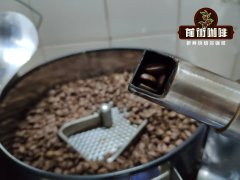
Ethiopian Coffee Variety Daquan introduces what kind of coffee is the local native heirloom?
If you are reading about Ethiopian coffee production soon, you will begin to see the word heirloom. Although it is difficult to find a true definition of the phrase, in Ethiopia it is used as a general term for many wild or genetically undefined varieties in the country. For the third wave of coffee lovers, these strange and rare varieties are exciting to try novel flavors.
Related
- Beginners will see the "Coffee pull flower" guide!
- What is the difference between ice blog purified milk and ordinary milk coffee?
- Why is the Philippines the largest producer of crops in Liberia?
- For coffee extraction, should the fine powder be retained?
- How does extracted espresso fill pressed powder? How much strength does it take to press the powder?
- How to make jasmine cold extract coffee? Is the jasmine + latte good?
- Will this little toy really make the coffee taste better? How does Lily Drip affect coffee extraction?
- Will the action of slapping the filter cup also affect coffee extraction?
- What's the difference between powder-to-water ratio and powder-to-liquid ratio?
- What is the Ethiopian local species? What does it have to do with Heirloom native species?

